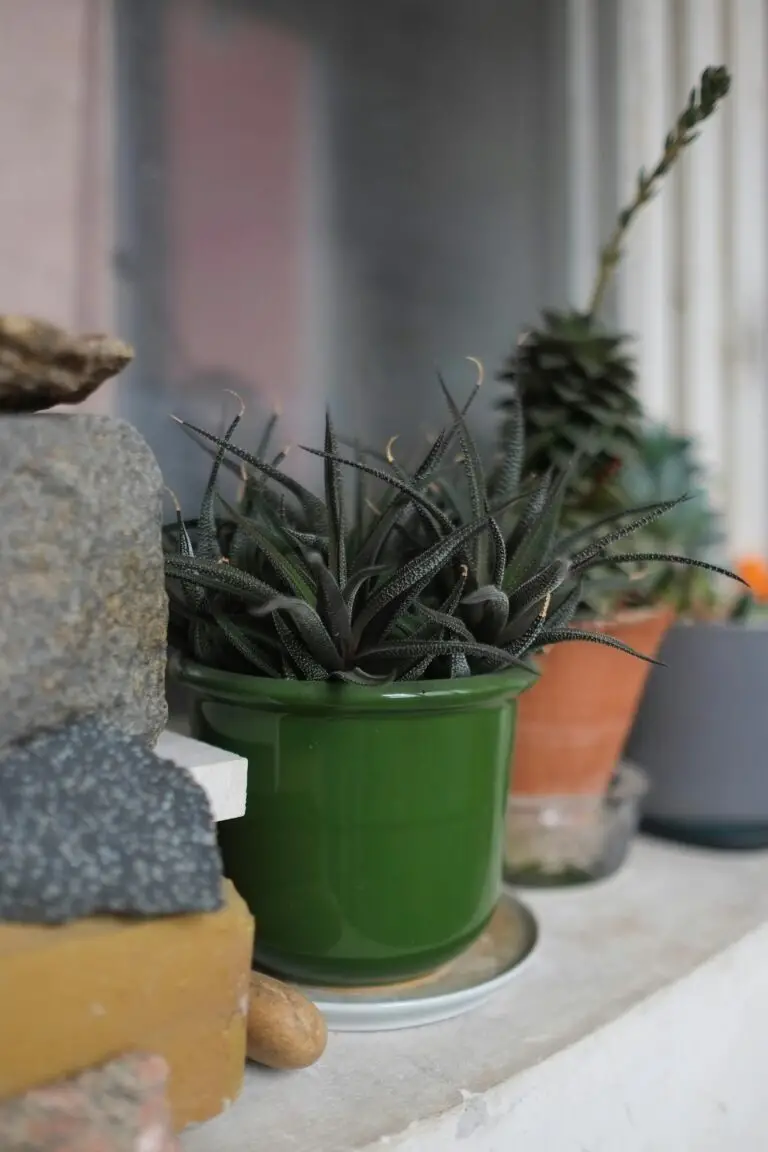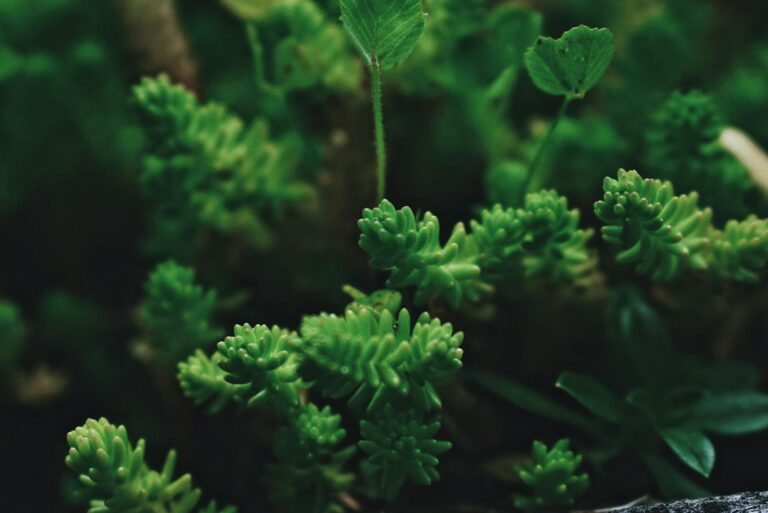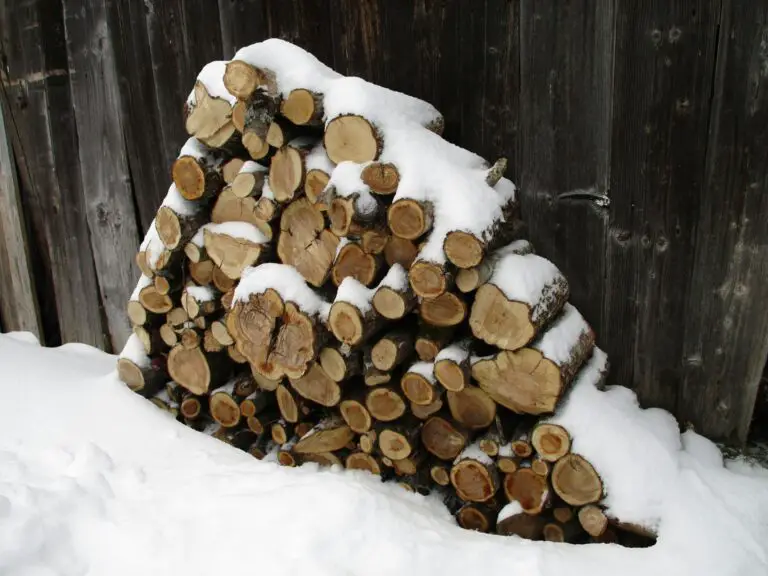Introduction
Welcome to the wonderful world of sedums, the versatile and vibrant perennials that are the darlings of the gardening community! As the seasons masterfully transition, painting landscapes with a spectrum of hues, it’s crucial for gardeners to consider their approach toward plant care, especially when it involves our beloved sedums. Let me walk you through the ins and outs of preparing these sturdy succulents for the cooler months ahead.
Sedums, often heralded as the stalwart soldiers of the succulent army, stand tall and firm, come rain or shine. Their popularity isn’t just a fluke; it’s a testament to their resilience and their ability to provide a lush backdrop or a pop of color just where it’s needed. Picture this: a sedum-lined pathway that braves the sweltering summer sun, only to transform into a frost-kissed tapestry as winter whispers its arrival. It’s this versatility and evergreen beauty that make sedums a top pick for both rookie planters and seasoned green thumbs.
But here comes the question of the hour—should sedum be cut back before winter? Does this rugged plant need a snip here and a trim there to successfully slumber through the frost? Vital care tips float around, suggesting mixed opinions on the matter, and rightfully so, because just like people, every plant has its own set of preferences and peeves. The art of gardening is, after all, a labor of love and listening—to the whispers of nature.

Let’s dive into a bit of real life here. Imagine your sedum as the stoic oak in your personal floral forest; it watches seasons pass without a fret. However, a knowledgeable gardener knows the importance of proactive care. By considering the plant’s needs ahead of the cold season, they ensure the sedum emerges next year with even greater vitality—much like a bear emerging from hibernation, ready to face the world after a rejuvenating sleep.
As our journey into sedum care continues, remember that these succulents are more than just plants. They’re a part of your garden’s story, your personal patch of peace, and their care is the narrative that shapes their growth and glory.
Understanding Sedum Plant Varieties
Hey, green thumbs and succulent lovers! Let’s dive into the colorful and varied world of sedums, also affectionately known as ‘stonecrops’. These hardy little champions come in an array of types, each boasting its unique charm and winter resilience. But before we turn our gardening gears towards winterization, let’s take a moment to appreciate the diversity at our fingertips.
From the low-growing ground covers that hug your garden bed to the statuesque varieties that grace your landscape with autumnal hues, sedums offer something for everyone. Picture this: the plump, jade-like leaves of Sedum spectabile, also known as ‘Autumn Joy’, transitioning to a vivid rosy-pink as the days get shorter. Or, imagine the ever-popular Sedum reflexum with its needle-like foliage creating a soft, evergreen carpet that laughs in the face of frost.
Each variety of sedum has its playbook when it comes to winter care. For instance, some sedums prefer a tidy trim before the cold snaps hit, while others would rather flaunt their frost-kissed foliage until spring’s return. The key to keeping these succulents smiling through the snow is knowing what cards you’re holding.
Consider the Sedum spurium, resilient yet refined; it weaves through your garden with the tenacity of a northern wind. It barely bats an eye at the approaching winter, making do with what nature bestows. On the other end of the spectrum, the delicate tangles of Sedum acre, fondly nicknamed ‘goldmoss’, can benefit from a slight cutback to prevent winter rot in soggier climates.
Curious about more savvy sedum insights? Check out our in-depth guide on the hydration needs of these versatile plants. It’s packed with tips to keep your stonecrops thriving, whether they’re basking in the sun or nestled under a blanket of snow.
Now, let’s enhance our understanding with a visual treat. Watch this video and follow the journey of sedum varieties that could be the next superstar in your winter garden.
Isn’t it fascinating how these hardy succulents adapt to the chill? Remember, the right care for your sedum variety isn’t just about beauty; it’s a toast to resilience and the cycle of life in your garden. So, before winter knocks, let’s ensure our sedum buddies are ready to brave the cold in style!
Benefits of Cutting Back Sedum
Picture this: It’s a crisp fall day, and you’re out in your garden, admiring your robust sedum plants. They’ve been a showcase all summer, with their lush foliage and starry blooms. But winter is on the horizon, and the question lingers in the fresh air – should sedum be cut back before winter? Well, let me walk you through why giving your sedum a good old-fashioned haircut is more than just a stylistic choice; it’s essential plant care that reaps benefits for seasons to come.
First off, sedum plants are hardy souls, thriving in conditions that would make other perennials wave a white flag. But even the toughest plants can benefit from pruning. Cutting back sedum before winter encourages neat and vigorous new growth when spring rolls around. Imagine slicing a piece of a sprawling sedum and watching it regenerate with vitality, much like a phoenix rising from the ashes – it’s a remarkable display of resilience and rejuvenation.
Maintaining the shape of your sedum isn’t just for curb appeal – although a well-groomed garden does make the neighbors green with envy. It’s about practicality. By trimming back those stems, you’re ensuring your sedum doesn’t get too leggy. Think of it like training a young sapling with stakes, guiding it to grow strong and upright. A sedum left to its own devices can become wild and unwieldy, ultimately compromising its bloom potential.
Last but certainly not least, cutting back sedum helps in preventing disease. As anyone who’s battled with plant mold or mildew knows, it’s the uninvited guest that overstays its welcome. Sedum’s thick foliage can trap moisture, setting the stage for disease, especially in the winter chill. A snip here and there increases air circulation, letting the plant breathe and dry out, deterring those pesky diseases from taking hold.
So, isn’t it intriguing how a simple act of pruning can be so pivotal for the health and aesthetics of your sedum? It’s not just about enduring the winter; it’s about setting the stage for future prosperity. It comes down to this: a little effort now means a bounty of benefits later.
To Cut or Not to Cut: Winter Prep Best Practices
Sedums, with their captivating allure, often pose a dilemma to garden enthusiasts as the chilly whispers of winter approach: to snip or not to snip? These hardy succulents are the topic of a hot debate, splitting the crowd into two camps. That’s right, there’s some frosty contention swirling about every gardener’s favorite, Sedum. Let’s delve into the frostbitten facts and figure out what’s best for these resilient plants.
On one hand, you’ve got the snip-happy gardeners who will tell you it’s best to cut back your sedums before the snowflakes start to fall. They argue that a good trim prevents rot and disease, and I can’t argue with the logic there. But is timing everything? Indeed, it is. Prune too early, and you might miss out on the plant’s full potential; wait too long, and Jack Frost might beat you to it.

Alternatively, let’s not overlook the cutback contrarians. This group prefers to let nature take its course, arguing that the old foliage protects the plant’s crown throughout the winter. This natural blanket is not just for show; it can shield the heart of the plant from extreme cold snaps. And do you know what? They’re not entirely off the mark. Sometimes, a little bit of untidiness can be a Sedum’s suit of armor against winter’s icy grip.
So, which way should your garden shears sway? The answer isn’t black and white—it’s as variegated as the leaves of ‘Autumn Joy’. It boils down to your local climate, the specific type of sedum, and a pinch of personal preference. Play it right and come springtime, your garden could be the envy of the neighborhood.
But remember, this isn’t just about aesthetics. Pragmatism plays a part too. Timing your trim correctly can influence not just how well your sedum weathers the winter, but also how it will rebound when the world thaws. So pull up a chair, grab your garden gloves, and let’s get analytical about the perennial puzzle that is the sedum snip conundrum.
How to Properly Cut Back Sedum
Gardening aficionados often ask, “Should sedum be cut back before winter?” The answer is a resounding “Yes!” But don’t just take out the shears and start chopping – there’s an art to pruning sedum plants. Let’s dive into the correct techniques that will ensure your sedum thrives season after season.
Choosing Your Tools
Arm yourself with the right tools before you embark on your pruning quest. A pair of sharp, clean gardening shears or scissors is your best ally. Dull tools can cause damage to the plant and create jagged cuts that take longer to heal, leaving your sedum vulnerable to diseases.
Timing Is Everything
When it comes to pruning sedum, timing is of the essence. As the crisp air of late fall signals the end of the growing season, it’s the perfect moment to give your sedum a trim. Aim to prune your sedum just as the plant goes dormant, this helps to prevent new growth that could be damaged by early frost.
Picture this: your sedum standing tall with its autumn blooms, and you, with shears in hand, waiting for the right moment when the plant’s lifecycle signals it’s time to cut back. It’s not just about following a calendar; it’s about understanding the rhythms of nature.
The Art of Cutting Back
Pruning sedum isn’t just a chop here and there. It’s about strategically cutting back the plant to a height of about 3 to 4 inches above the soil. This height is ideal because it preserves the necessary buds for next year’s growth. Be sure to remove any dead, dying, or diseased stems to maintain a healthy plant.
A real-life example would be that of a gardener who not only prunes the obvious spent flowers but also carefully inspects for any hidden issues within the plant’s foliage. Snipping away the right parts can rejuvenate your sedum, like a well-deserved spa day does for you.
And what about those robust stems that have spent the summer reaching for the sky? It’s bittersweet, but they must be trimmed back too. They’ve had their season in the sun, and now it’s time to create space for fresh, vibrant growth when spring arrives.
For a visual guide on how to prune your sedum, take a peek at this helpful video:
Alternative Winter Care Tips for Sedum
While deciding if you should cut back sedum before winter, it’s vital to consider the array of other care strategies that play a critical role in maintaining sedum’s vigor during the colder months. After all, tending to these succulent beauties doesn’t end with pruning; it’s a holistic approach that ensures they bounce back with zeal in spring.
Take mulching, for instance. It’s like tucking your plants in with a cozy blanket of organic matter. Mulch acts as nature’s insulator, protecting the roots from freezing temperatures, while also retaining soil moisture. The beauty of mulch is in its simplicity — a layer of shredded leaves or straw can make all the difference between a sedum that survives and one that thrives.

Now, let’s chat about watering. Contrary to what you might think, sedum plants do need an occasional sip during winter, especially if the weather’s been more dry martini than moist melon. The trick is not to overdo it; just enough water to prevent the roots from drying out completely. Imagine your sedum as a self-care enthusiast taking minimal sips of cucumber-infused water to stay hydrated!
Last but certainly not least, is the shield of protection from Jack Frost’s bite. In regions where the thermometer dips lower than a limbo stick, consider using frost cloth or burlap to give your sedum an extra layer of defense. It’s like giving your plant a warm hug, offering it comfort during the chilly winter dances.
Embracing these additional winter care measures will help ensure your sedum not only survives but flourishes with each returning spring. So, layer that mulch, schedule those sips of water, and wrap them up if needed. Your sedum will thank you with lush, vibrant growth when the ground thaws.
Common Misconceptions About Pruning Sedum in Fall
When autumn leaves start to paint the landscape in vibrant hues, gardeners begin pondering over their sedum plants. “To cut or not to cut before the chill sets in?” – that is the question on many green thumbs’ minds. Truth be told, there are several myths floating around about pruning sedum in fall. Let’s chop through this thicket of misinformation and lay out the facts.

Firstly, a popular misconception is that all sedum plants must be pruned as winter looms. However, expert advice suggests otherwise. Different sedum species can have unique requirements. For instance, some varieties flaunt an incredible winter presence, showing off frosted seed heads that look spectacular with a backdrop of snow.
Take ‘Autumn Joy’ for example. For many avid gardeners, the rusty red charm of its flower heads, which last well into the cooler months, are a sight for sore eyes. Leaving these intact doesn’t just add aesthetic value to your winter garden but also provides a feasting ground for local birdlife. For those who love a more nuanced approach to gardening, this guide offers a detailed how-to on pruning specific sedum varietals like ‘Autumn Joy’.
Another fallacy is the notion that trimming sedum is a death sentence for its spring revival. This couldn’t be more incorrect. Most sedum plants are incredibly resilient and bounce back with gusto come spring, regardless of a fall trim. In fact, strategic pruning can invigorate the plant, encouraging stronger and bushier growth when warmth returns to the soil.
Moreover, many believe that a heavy-handed approach is needed when pruning sedum. On the contrary, this is a delicate dance that requires finesse. Overzealous cuts can do more harm than good, while thoughtful selective trimming can promote health and vigor in the plant. It’s about quality, not quantity. To perfect your pruning technique, nothing beats watching an expert at work. Here’s a photographic meditation on pruning from Green Packs, to help you wield those shears with the precision of a seasoned gardener.
In essence, learning about your specific sedum species, respecting their growth patterns, and following best practices can make the difference between a thriving succulent showcase and a garden faux pas. So next time someone tells you to go scissor-happy on your sedum, take a pause and remember: a well-informed gardener knows when to cut back and when to stand back.
Should Sedum Be Cut Back Before Winter? Essential Care Tips
Sedum Varieties and Their Specific Winter Needs
As the mercury dips and Jack Frost starts to glisten on the foliage, sedum lovers may begin to wonder about the particular needs of their beloved succulents. From the stonecrop to the ‘Autumn Joy’, different sedum varieties whisper their own winter wishes. Let’s take a walk through a winter wonderland of sedum care.
Consider the stonecrop sedum, a hardy trooper that often wears a cap of snow without complaint. Common advice suggests that these low-lying beauties can be left untrimmed, their sempervirent leaves offering winter interest and shelter for tiny overwintering creatures. Roger, a gardener from Maine, chuckles as he shares, “My stonecrops are the last to say goodnight; they’re like the stoic fishermen of the plant world, braving the winter seas.”
Moving on to the taller ‘Autumn Joy’ variety, which sways with a crown of russet hues, there’s a bit of a debate. Some avid gardeners argue that leaving the seed heads be until early spring provides an architectural silhouette against the frosty landscape. Others snip away, believing a pre-winter trim wards off rot in excessively snowy regions. Nancy, a green thumb from Colorado, asserts, “I watch the weather, not the calendar. If heavy snow is forecasted, I give my ‘Autumn Joy’ a quick haircut.”
And then there’s the debate around the ‘Dragon’s Blood’, with its mythical name and fire-kissed leaves. Traditional wisdom often errs on the side of caution, advocating for a tidy snip to prevent the weight of snow and ice from breaking the stems. George, who boasts a garden full of dragon fire, advises, “A little trim for the ‘Dragon’s Blood’ means a fierce comeback in the spring.”

Ultimately, the decision to cut back sedum before winter can be a personal and practical one. But, as with any perennial, understanding the unique whispers of each variety ensures that come spring, you’ll be greeted with a garden that’s ready to burst back to life, as vigorous and splendid as ever.
Frequently Asked Questions
When the mercury drops and the landscape dons its winter whites, garden enthusiasts often ponder over the care needed for their green companions, particularly sedum plants. As these hardy perennials prepare for a chilly slumber, there’s a buzz of queries on the best practices to ensure they wake up in spring vibrant and healthy. Let’s dive into some of the recurring questions that might be tickling your green fingers!
Should I cut back my sedum before the frost sets in?
Ah, the perennial dilemma! To snip or not to snip? Sedum, with its succulent leaves and starry flowers, has a reputation for being hardy. But as the golden hues of fall make way for winter’s frosty embrace, many wonder if a pre-winter haircut is the way to go. In the wild, you might notice sedum flaunting its faded glory throughout the winter months, providing an aesthetic appeal to the otherwise barren landscape, as well as a haven for local wildlife seeking shelter or a snack. Emulating this in your own slice of Eden might not just be a visual treat but could also play a role in supporting your local ecosystem.

How does cutting or not cutting back sedum affect its spring growth?
Picture this: it’s spring, the snow has melted, and the air hums with new life. Your decision to either trim the sedum or to let it brave the winter elements will now play a part. If you’ve opted for the natural route and allowed it to stand tall, you may find that the old stems actually protected the new buds from harsh weather, kind of like a big brother sheltering his kin. On the flip side, if you’ve gone for a tidier approach and cut back the stems, fret not! This can stimulate a more robust growth spurt as the plant doesn’t have to split its resources between old and new stems. Either way, your sedum is designed to bounce back with a zest for life that’s both admirable and reassuring.
Are there any particular sedum species that require different care in winter?
Indeed, not all sedums are cast from the same mold. While the majority relish the cold and thrive post a frosty experience, there are the tender succulent cousins, often found cozied up in containers or rock gardens, that crave a bit more TLC. These varieties might need to swap their snow-boots for slippers as they retire indoors or seek shelter in a frost-free nook of your garden. It’s all about understanding the temperament of your plant—does it bask in the glory of a winter wonderland or does it prefer to observe the frost from the cozy confines of a windowsill?
What signs should I look for to know my sedum is ready for the winter?
Your sedum will give you subtle nods when it’s time to start thinking about winter. The leaves may toughen up, and the stems could take on a wooden persona, telling tales of summer’s end. Flowers that once danced in the breeze may fade and dry, still clinging to their posts like weathered sentinels. This is sedum’s way of battening down the hatches and girding itself against the coming cold. Watch for these signs as autumn wanes, and rest assured, your verdant friend is resourceful enough to face winter head-on, with or without a prelude of pruning.



